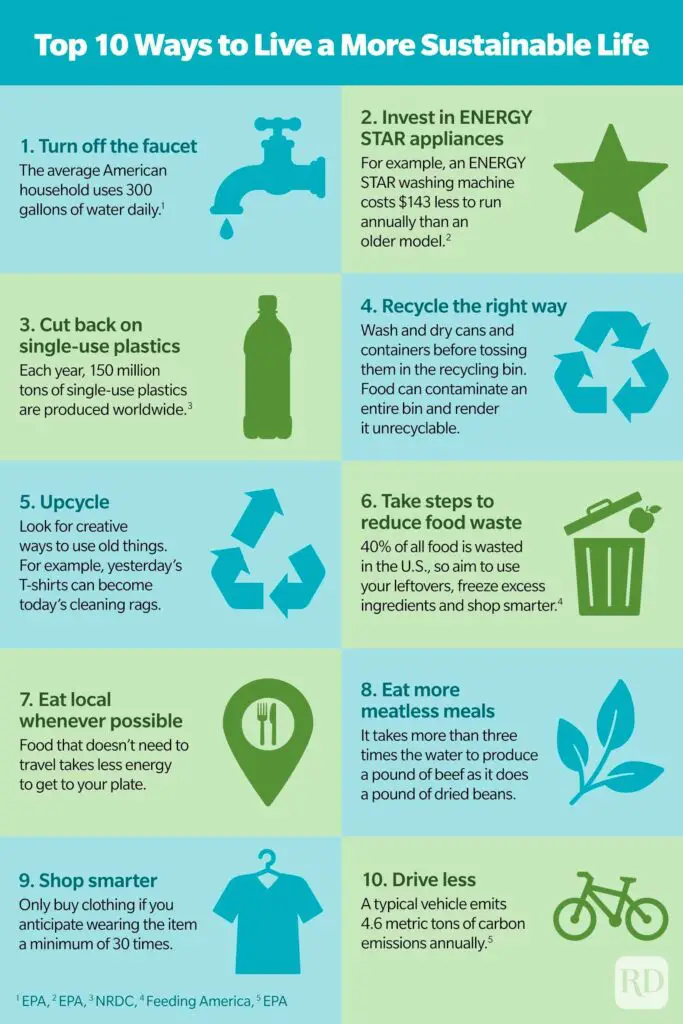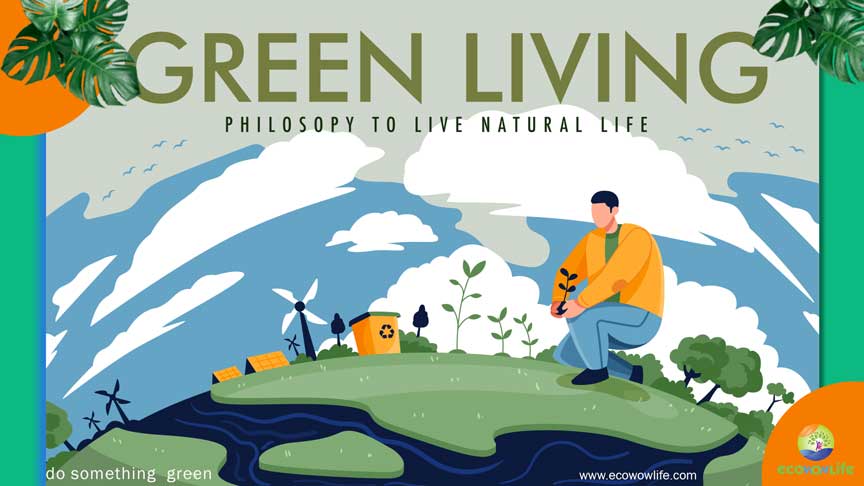Have you ever wondered if it’s possible to live a frugal lifestyle while also being environmentally conscious? Well, I’m here to tell you that it is indeed possible, my friend! In fact, green living and frugality go hand in hand, and today I’m going to share some tips and tricks on how you can achieve both. So sit back, grab a cup of tea, and get ready to learn how to live frugally and sustainably!
Let’s start by talking about why green living and frugality are the perfect match. Living a frugal lifestyle often means being mindful of our spending and consumption habits. And what better way to be mindful than by choosing to live sustainably? By making conscious choices about the products we buy, the energy we use, and the waste we produce, we can not only save money but also reduce our impact on the environment. In this article, I will delve into the different aspects of green living, such as reducing your carbon footprint, making eco-friendly choices, and even DIY-ing your way to a more sustainable and frugal lifestyle. Trust me, by the end of this article, you’ll be ready to take on the world with your green and resourceful ways!

Green Living: How to Live Frugally and Sustainably
Green living has become an increasingly popular lifestyle choice for individuals who want to reduce their impact on the environment and live more sustainably. It involves making conscious decisions to minimize resource consumption and waste production while prioritizing environmentally friendly practices. In this article, I will discuss the concept of green living, its importance, and the various ways in which we can embrace a frugal and sustainable lifestyle.
Definition of Green Living
Green living refers to making choices and adopting practices that prioritize and promote environmental sustainability. It encompasses a wide range of actions, including reducing energy consumption, conserving water, choosing sustainable transportation, reducing waste, eating locally and seasonally, growing your own food, practicing mindful consumption, reducing chemical exposure, supporting sustainable businesses, and engaging in community activism. By adopting these practices, individuals can minimize their carbon footprint and make a positive impact on the environment.
Importance of Green Living
Living a green lifestyle is more important now than ever before. The world is facing environmental challenges like climate change, deforestation, pollution, and depletion of natural resources. By embracing green living principles, we can contribute to the preservation of our planet for future generations.
Benefits of Green Living
Environmental Benefits
One of the primary benefits of green living is the positive impact it has on the environment. By reducing our energy consumption, conserving water, and minimizing waste production, we can significantly reduce our carbon footprint. This, in turn, helps to slow down climate change and preserve ecosystems. Embracing green living practices such as recycling, composting, and using renewable energy sources can also help to conserve natural resources and protect biodiversity.
Health Benefits
Green living is not only beneficial for the planet but also for our own health and well-being. By choosing organic and non-toxic personal care and cleaning products, we can avoid exposure to harmful chemicals that can cause allergies, respiratory problems, and other health issues. Additionally, by eating locally and seasonally, we can consume fresh, nutrient-rich food that supports our overall health. Regular physical activity, such as walking or bicycling, which are common practices in green living, also promotes a healthy lifestyle.
Financial Benefits
Contrary to popular belief, living a green lifestyle can actually save us money in the long run. By reducing our energy consumption and choosing energy-efficient appliances, we can lower our utility bills. Installing insulation and weatherproofing our homes can also help us save on heating and cooling costs. Moreover, growing our own food can significantly reduce our grocery expenses. By adopting sustainable habits, we can lead a frugal lifestyle without compromising on our quality of life.
Reducing Energy Consumption
Energy-Efficient Appliances
One of the most effective ways to reduce energy consumption is by using energy-efficient appliances. When purchasing new appliances, look for the Energy Star label, which indicates that the appliance meets strict energy efficiency guidelines. Energy-efficient appliances not only consume less energy but also perform better and have a longer lifespan.
Insulation and Weatherproofing
Proper insulation and weatherproofing can significantly reduce our heating and cooling needs. Insulating our homes helps to maintain a comfortable indoor temperature while reducing the energy required for heating or air conditioning. Weatherproofing, which involves sealing gaps and cracks, prevents air leaks, reducing the amount of energy needed to maintain a constant temperature.
Energy-Saving Tips
In addition to using energy-efficient appliances and improving insulation, there are several other simple steps we can take to reduce our energy consumption. These include using natural light whenever possible, turning off lights and electronics when not in use, using power strips to easily turn off multiple devices, and adjusting the thermostat to conserve energy. Small changes like these can add up to significant energy savings over time.
Conserving Water
Water-Saving Fixtures
Conserving water is essential for sustainable living. By installing water-saving fixtures such as low-flow showerheads, faucets, and toilets, we can significantly reduce our water consumption. These fixtures use less water without compromising on performance, helping us conserve water and reduce our utility bills.
Rainwater Harvesting
Rainwater harvesting is another effective way to conserve water. By collecting rainwater in barrels or tanks, we can utilize it for watering plants, washing cars, or cleaning purposes. This reduces our reliance on treated water, which is a scarce resource in many regions. Rainwater harvesting is a simple and cost-effective method that can be implemented by individuals and communities.
Water Conservation Tips
In addition to utilizing water-saving fixtures and practicing rainwater harvesting, we can adopt small daily habits to conserve water. These include taking shorter showers, fixing leaks promptly, watering plants early in the morning or late in the evening to reduce evaporation, and using a broom instead of a hose when cleaning outdoor spaces. Being mindful of our water usage can help us make a significant impact on water conservation efforts.

Choosing Sustainable Transportation
Carpooling and Public Transportation
Choosing sustainable transportation options is crucial for reducing our carbon footprint. One of the simplest ways to do this is by carpooling or using public transportation whenever possible. Sharing a ride with others or utilizing public transport not only reduces traffic congestion and air pollution but also saves money on fuel and parking expenses.
Bicycling and Walking
Another eco-friendly transportation option is bicycling or walking. These modes of transportation have numerous benefits, including reducing carbon emissions, improving physical fitness, and saving money on fuel and vehicle maintenance costs. Whenever feasible, consider choosing active transportation methods instead of relying solely on motorized vehicles.
Electric Vehicles
For those who require a personal vehicle, electric vehicles (EVs) are an excellent choice for reducing emissions and dependency on fossil fuels. EVs produce zero tailpipe emissions, thereby contributing to cleaner air quality. Additionally, owning an electric vehicle can significantly reduce fuel costs over time, as electricity is generally cheaper than gasoline.
Reducing Waste
Composting
Composting is a simple and effective way to reduce waste production and create nutrient-rich soil. By composting organic waste such as food scraps and yard trimmings, we can divert these materials from landfills where they would generate harmful greenhouse gases. Compost can be used to enrich garden soil or donated to community gardens, reducing the need for chemical fertilizers.
Recycling
Recycling is another crucial aspect of waste reduction. By separating recyclable materials from our regular waste and ensuring their proper disposal, we can conserve resources and reduce the energy required for manufacturing new products. Always check the recycling guidelines in your area to ensure that you are recycling correctly.
Upcycling and Reusing
In addition to recycling, upcycling and reusing items can further reduce waste. Upcycling involves repurposing items that would otherwise be discarded into new and useful products. Reusing items, such as glass jars or plastic containers, instead of throwing them away, reduces the demand for new products and reduces waste generation.

Eating Locally and Seasonally
Benefits of Local and Seasonal Food
Choosing to eat locally and seasonally not only supports the environment but also benefits our health and the local economy. Locally sourced food requires fewer transportation miles, reducing carbon emissions associated with long-distance transportation. Seasonal produce is often fresher and more nutritious since it is harvested at its peak. Additionally, buying from local farmers supports the local economy and promotes sustainable agricultural practices.
Supporting Local Farmers
By purchasing food directly from local farmers, we contribute to the growth of sustainable agricultural practices. Local farmers often use organic or less intensive farming methods, reducing the use of harmful pesticides and preserving soil health. Additionally, supporting local farmers helps to maintain food diversity and promotes food security in our communities.
Tips for Eating Locally and Seasonally
To incorporate local and seasonal food into our diet, we can join community-supported agriculture (CSA) programs or visit farmers markets where local produce is sold directly by farmers. We can also start a home garden or participate in a community garden to grow our own fruits and vegetables. By being mindful of the origin and seasonality of our food, we can make informed choices that benefit our health and the environment.
Growing Your Own Food
Benefits of Growing Your Own Food
Growing your own food is not only a rewarding and fulfilling experience but also offers numerous benefits for a sustainable lifestyle. By gardening at home, we have control over the use of pesticides and fertilizers, making it easier to adopt organic practices. Growing our own food also reduces our reliance on commercially grown produce, which often requires large amounts of water, pesticides, and transportation.
Starting a Home Garden
Starting a home garden can be as simple as growing herbs in small pots or as extensive as creating a vegetable garden in your backyard. Choose plants that are suitable for your geographical location, taking into consideration factors like climate and sunlight. By learning about gardening techniques and sustainable practices, we can successfully grow our own food and reduce our environmental impact.
Urban Farming
For those living in urban areas with limited space, urban farming offers alternative methods of growing food sustainably. Vertical gardens, container gardening, and rooftop gardens are popular options for maximizing space and utilizing available resources efficiently. Urban farming promotes self-sufficiency and empowers individuals to take control of their food production, even in urban environments.

Mindful Consumption
Avoiding Impulse Purchases
In a world driven by consumerism, one of the fundamental principles of green living is practicing mindful consumption. Avoiding impulse purchases and unnecessary consumption helps reduce waste and prevent the depletion of resources. Before making a purchase, ask yourself if the item is truly necessary and if there are more sustainable alternatives available.
Minimalism and Decluttering
Embracing a minimalist lifestyle can greatly contribute to sustainable living. By decluttering our living spaces and letting go of unnecessary possessions, we can reduce waste generation and simplify our lives. Owning fewer items also means using fewer resources during production and reducing the demand for new products.
Repairing and Repurposing
Rather than discarding items that are broken or worn out, consider repairing or repurposing them. Repairing appliances, electronics, or clothing can extend their lifespan and reduce waste. Repurposing items for different uses or donating them to others who can use them ensures their continued usefulness and prevents them from ending up in landfills.
Reducing Chemical Exposure
Natural Cleaning Products
Traditional cleaning products often contain harsh chemicals that can be harmful to both the environment and our health. By switching to natural cleaning products, we can reduce our exposure to toxic substances and minimize the negative impact on ecosystems when these products are washed down the drain. Using simple ingredients such as vinegar, baking soda, and lemon, we can create effective, eco-friendly cleaning solutions.
Organic and Non-Toxic Personal Care
The personal care products we use on a daily basis can also have a significant impact on both our health and the environment. Opting for organic and non-toxic personal care products ensures that we are not exposed to harmful chemicals such as parabens and phthalates. Additionally, choosing products that are cruelty-free and sustainably sourced supports ethical and sustainable practices in the beauty industry.
Avoiding Harmful Chemicals in the Home
Many household items, such as furniture, paint, and home improvement materials, contain toxic chemicals that can negatively impact indoor air quality. When renovating or furnishing our homes, it is important to choose products that are low in volatile organic compounds (VOCs) and other harmful substances. This promotes a healthier living environment for ourselves and our families.

Supporting Sustainable Businesses
Eco-Friendly Products and Services
Supporting businesses that prioritize sustainability and offer eco-friendly products and services is an effective way to contribute to the green living movement. Look for brands that are transparent about their manufacturing processes, use renewable materials, and minimize their environmental impact. By choosing sustainable products, we support the demand for environmentally friendly alternatives and encourage more businesses to adopt sustainable practices.
Ethical and Fair Trade Practices
In addition to environmental concerns, supporting businesses that practice fair trade and ethical sourcing ensures that workers and producers are treated fairly and receive fair wages. Ethical practices in supply chains promote social justice and contribute to a more equitable and sustainable global economy.
Certifications to Look For
To identify businesses that align with sustainable practices, look for certifications and labels that indicate their commitment to environmental and social responsibility. Examples include B Corp certification, Fair Trade certification, and Organic certification. By supporting certified businesses, we can trust that our purchases are contributing to positive change and promoting sustainable development.
Community Engagement and Activism
Educating Others about Green Living
One of the most impactful ways to promote green living is by educating others about its importance and the actions they can take to live more sustainably. By sharing knowledge and raising awareness about environmental issues, we empower others to make informed choices and take action. This can be done through conversations, social media, or even by organizing educational events in our communities.
Volunteering for Environmental Causes
Volunteering for local environmental organizations or participating in community clean-up events is a practical way to directly contribute to positive environmental change. By dedicating our time and effort to these causes, we can make a tangible impact on the health of our communities and the planet as a whole. Volunteering also provides an opportunity to connect with like-minded individuals and be part of a larger movement towards sustainability.
Advocating for Policy Change
Beyond individual actions, advocating for policy change is crucial for addressing environmental issues on a broader scale. This can involve contacting elected officials, signing petitions, attending public hearings, and joining environmental organizations that work towards policy reform. By participating in advocacy efforts, we can influence decision-making processes and push for regulations and policies that prioritize sustainability and environmental protection.
Financial Savvy in Green Living
Budgeting for Green Living
Living a green lifestyle does not have to be expensive. In fact, it can be a financially savvy choice in the long run. By budgeting for green living practices, such as investing in energy-efficient appliances or planning for organic food purchases, we can incorporate sustainable choices into our financial plans. It is important to view green living as an investment in our health, well-being, and the future of the planet.
Saving Money While Living Sustainably
Living sustainably often goes hand in hand with saving money. By reducing energy consumption, conserving water, and adopting a frugal mindset, we can lower our utility bills and other household expenses. Additionally, growing our own food or buying locally and seasonally can significantly reduce our grocery expenses. Embracing a frugal lifestyle can be the key to living sustainably while maintaining financial stability.
Investing in Renewable Energy
Another way to align our financial goals with sustainable living is by investing in renewable energy sources. Solar panels and wind turbines are becoming increasingly affordable and offer long-term energy savings. Investing in renewable energy not only reduces our carbon footprint but can also provide a return on investment by generating clean energy and potentially lowering our energy costs.
Conclusion
In conclusion, green living and frugality are indeed the perfect match. Embracing a sustainable lifestyle allows us to reduce our impact on the environment while also saving money and improving our overall well-being. By practicing mindful consumption, conserving resources, reducing waste, and supporting sustainable practices, we can make a positive difference in the world. Whether through simple changes in our daily habits or active engagement in community and activism, each of us has the power to contribute to a better future for ourselves and future generations. Let us embrace the principles of green living and live frugally and sustainably for a brighter, greener future.

